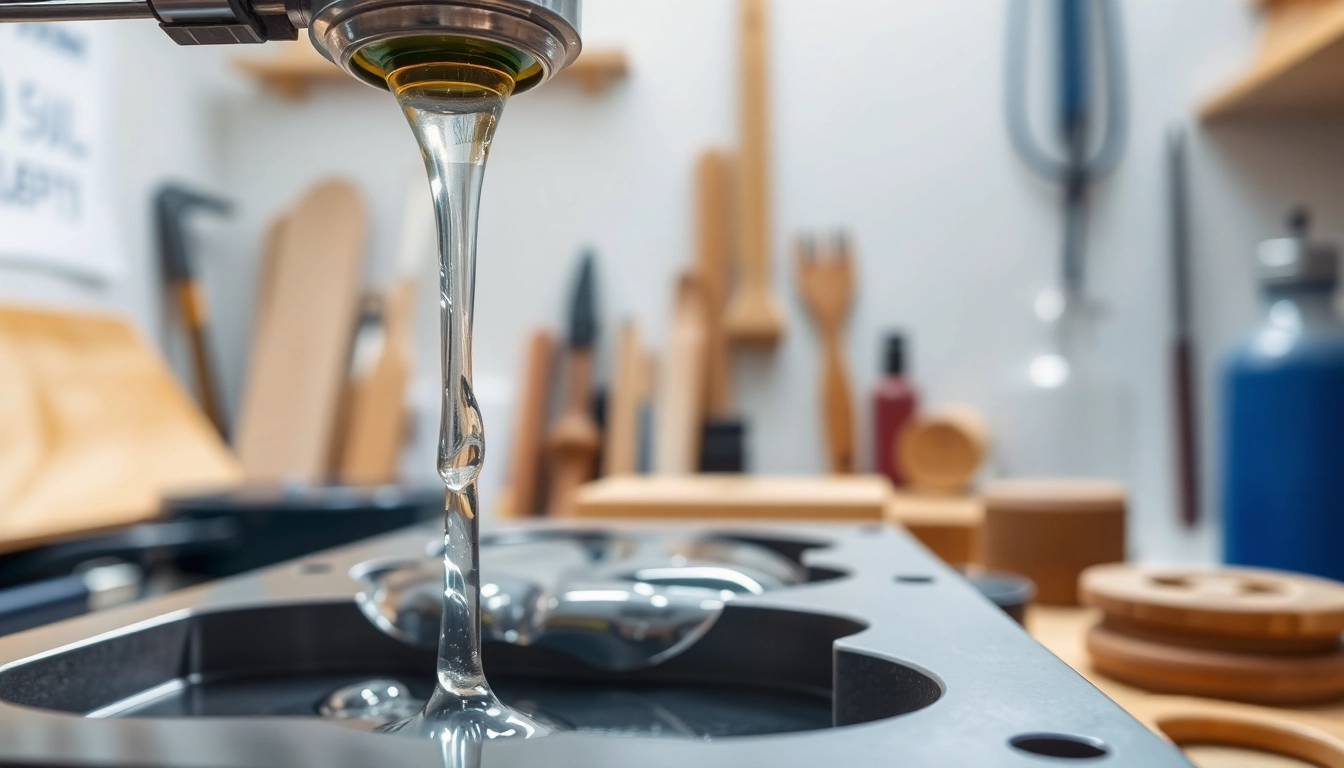Understanding Infusion Resins
What Are Infusion Resins?
Infusion resins are specialized polymeric materials designed to be used in composite manufacturing processes, primarily in vacuum infusion techniques. These resins are characterized by their low viscosity, allowing them to flow easily into fiber reinforcements. This property is essential for achieving uniform distribution within the composite structure, ultimately enhancing the material’s overall performance. By using infusion resins, manufacturers can create components with superior mechanical properties, reduced weight, and excellent finish quality.
During the infusion process, the air within the mold is evacuated, creating a vacuum. This vacuum draws the resin into the mold, impregnating the dry reinforcement materials such as fiberglass or carbon fiber. The result is a lightweight, strong composite that can be utilized in a variety of industries, including aerospace, automotive, and marine applications. For more about these advanced materials, you can explore infusion resins.
Key Characteristics of Infusion Resins
Infusion resins possess specific characteristics that differentiate them from traditional resins:
- Low Viscosity: This allows for easier handling and application, ensuring complete filling of the mold without air pockets.
- Controlled Curing: They often have a longer pot life, providing manufacturers ample time to work with the resin before it begins to set.
- High Strength-to-Weight Ratio: Infusion resins contribute to lightweight composites that maintain high tensile strength, making them ideal for performance-critical applications.
- Clarity and Finish: These resins can achieve a high level of optical clarity, which is especially important for applications requiring aesthetic considerations.
Applications of Infusion Resins in Industry
Infusion resins are widely utilized across various industries, showcasing their versatility and performance capabilities. Some prominent applications include:
- Aerospace: Used in the manufacturing of aircraft components to reduce weight and improve fuel efficiency.
- Automotive: Employed in high-performance sportscar manufacturing to enhance strength while minimizing vehicle weight.
- Marine: Used in boat hulls and components, providing durable, lightweight solutions that resist the harsh marine environment.
- Wind Energy: Essential in the production of wind turbine blades to maximize energy efficiency and reduce material costs.
Benefits of Using Infusion Resins
Durability and Strength
One of the paramount benefits of using infusion resins is their ability to create durable composites. The infusion process ensures complete saturation of the fiber materials, leading to a strong bond that enhances the mechanical properties of the final product. This results in composites that are capable of withstanding extensive mechanical stresses, making them suitable for demanding applications.
Improved Clarity and Finish
Infusion resins are formulated to achieve exceptional clarity, making them ideal for applications where aesthetics matter. They create surfaces that are smooth and visually appealing, which is particularly valuable in consumer-facing industries and custom projects where the appearance is vital.
Efficiency in Manufacturing Processes
The vacuum infusion process allows for faster and more efficient manufacturing. Since the resin is drawn into the reinforcement materials, it minimizes the risks of air voids and improves overall consistency and quality. Moreover, the use of low-viscosity infusion resins facilitates quicker production cycles, contributing to better throughput and reduced labor costs.
Best Practices for Using Infusion Resins
Preparation of Materials
Proper preparation of the reinforcement materials is crucial for successful infusion. This includes ensuring that the fiber materials are clean and dry, as contaminants can interfere with the bond between the resin and fibers. Additionally, choosing the appropriate fiber types and architectures can enhance the performance of the final composite.
Optimal Mixing Techniques
When mixing infusion resins and hardeners, adherence to the recommended ratios is vital. This ensures the proper chemical reaction and optimal performance characteristics. Using a mechanical mixer can help achieve a homogenous mixture, thus eliminating any inconsistencies that might arise from manual mixing.
Effective Curing Processes
Following the manufacturer’s guidelines regarding curing conditions is essential. Factors such as temperature, humidity, and time can affect the curing process. Monitoring these conditions closely can prevent issues such as under-curing or over-curing, which can compromise the integrity of the composite.
Performance Metrics for Infusion Resins
Testing and Quality Control
To ensure that infusion resins meet the required standards, rigorous testing and quality control measures should be implemented. This includes:
- Tensile Testing: Evaluating the tensile strength of the final composite can provide insights into its performance capabilities.
- Flexural Testing: This measures the material’s ability to resist deformation under load, which is critical for structural applications.
- Impact Testing: Assessing how well the composite withstands sudden forces can reveal vital information about its toughness.
Measuring Final Product Performance
Once the product is manufactured, ongoing performance evaluations are important. Feedback from end-users regarding durability, finish, and functionality can inform future iterations of resin formulations and manufacturing techniques. Continuous improvement practices can help in meeting changing market demands and enhancing product quality.
Feedback and Adjustments
Establishing a feedback loop from production to design teams can lead to significant improvements in the infusion resin application processes. This feedback can be used to adjust curing times, composition ratios, and infusion techniques for optimized performance in future projects.
Future Trends in Infusion Resins Technology
Sustainability Initiatives
As industries increasingly emphasize sustainability, the development of eco-friendly infusion resins is on the rise. This includes resins formulated from renewable resources and those designed to be recyclable. Moving towards a circular economy will likely establish new standards for material usage within composite manufacturing.
Innovations in Resin Formulations
The future of infusion resins is poised for advancements in formulation that enhance properties such as heat resistance, flexibility, and cure times. Researchers are focusing on developing smart resins that can respond to environmental stimuli, which could lead to groundbreaking applications in multiple fields.
Market Outlook and Predictions
With the ongoing advancements in technology and an increasing market demand for lightweight, high-performance materials, the infusion resins sector is expected to witness substantial growth. Companies focusing on developing innovative resins and providing solutions for sustainable manufacturing processes will likely dominate the market. As industries evolve, the demand for advanced composite materials will drive development in infusion resins.


